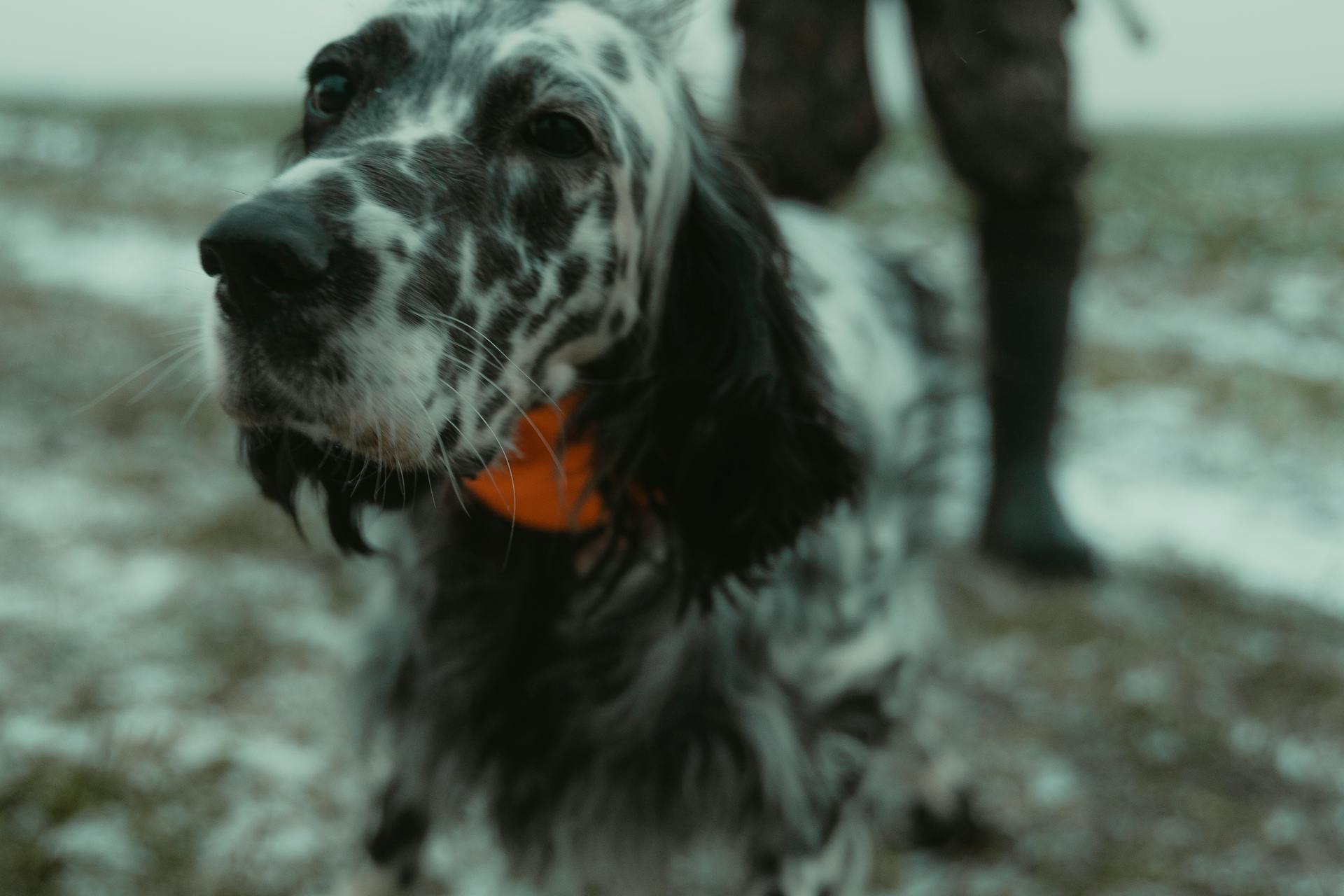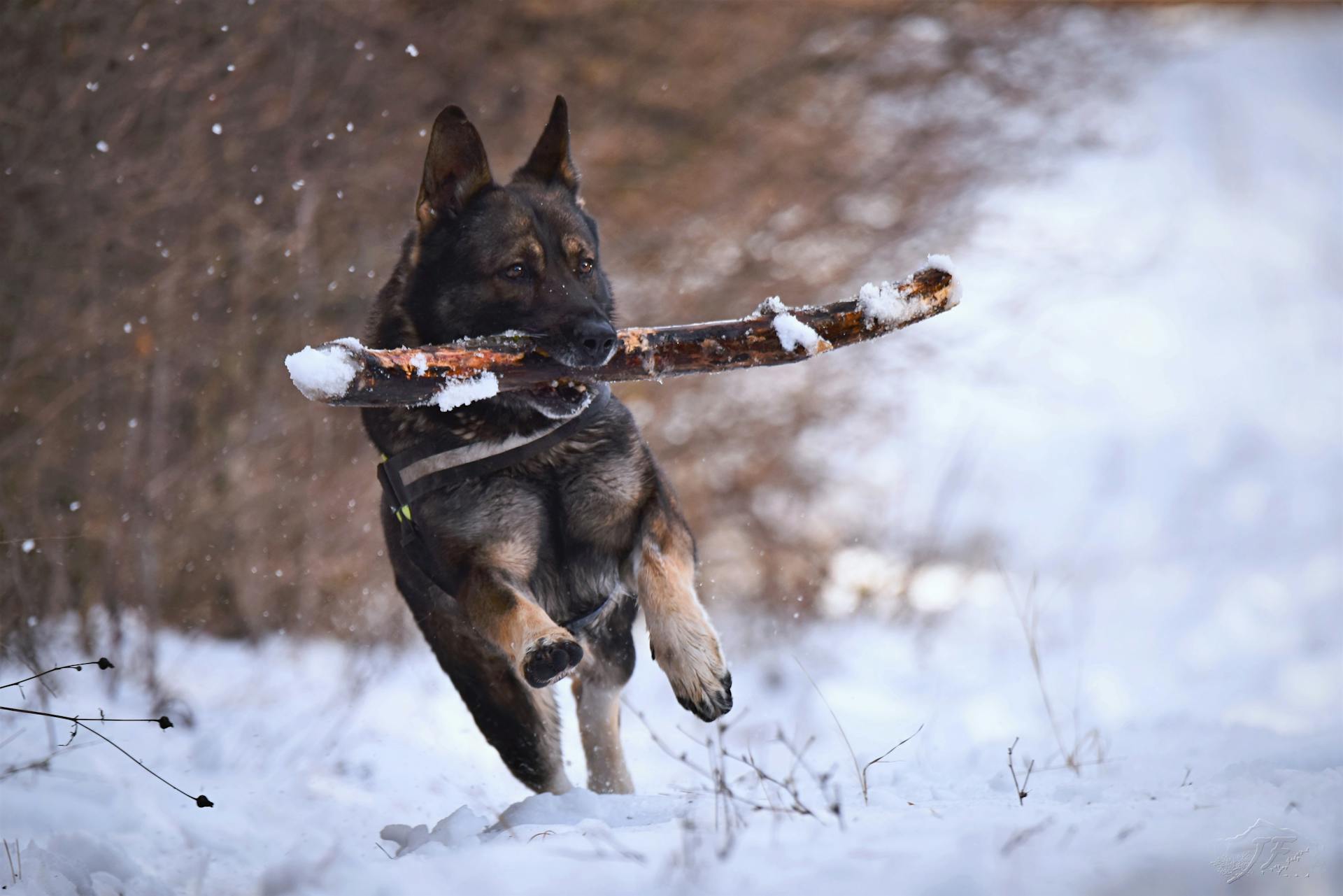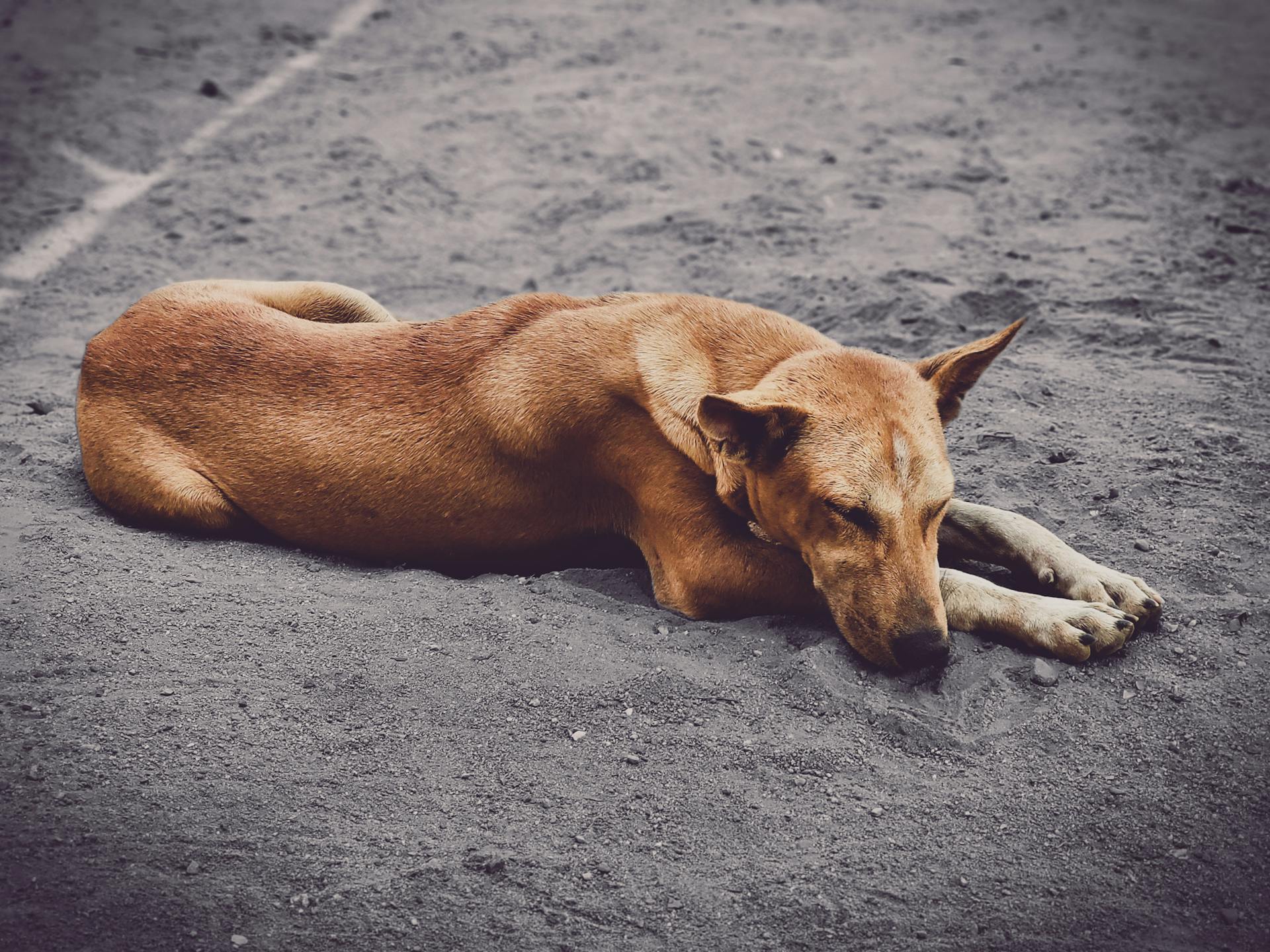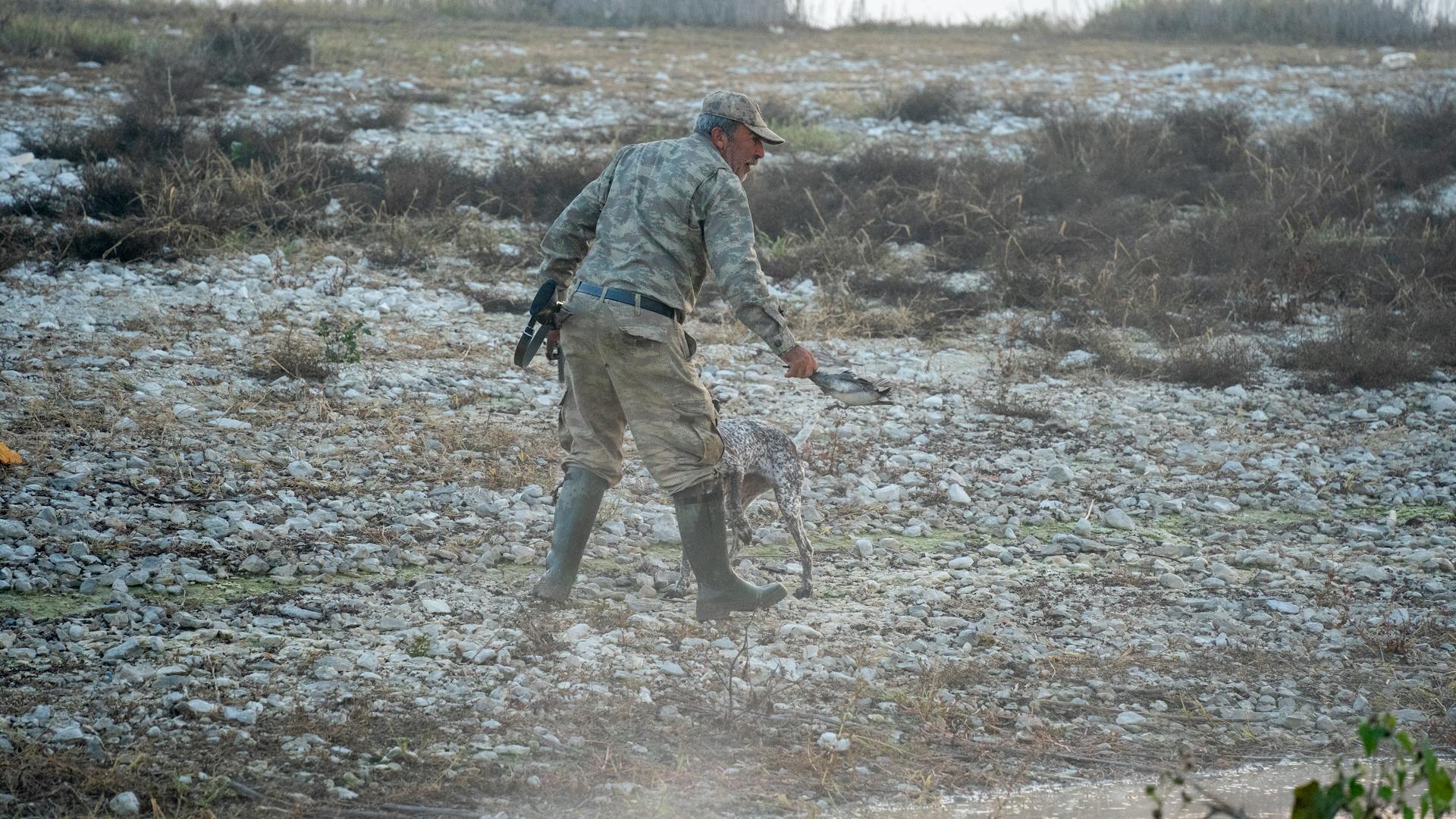
The Ratonero Valenciano is a rare and ancient breed of dog originating from the Valencia region in Spain. It's an old companion dog that has been around for centuries.
This breed is small to medium in size, typically weighing between 8-12 kg. Its short, smooth coat comes in a variety of colors, including fawn, white, and black.
History
The Ratonero Valenciano has a rich history that dates back to the 16th century, when it was first used as a hunting dog to catch rats and other rodents.
This breed originated in Valencia, an Eastern region on the Iberian Peninsula in Spain, and was initially developed to work as a hunting dog, catching vermin and other small animals.
The Ratonero Valenciano is one of the five native Spanish rat-hunting dog breeds, which suggests that it has distant relatives in common with other breeds.
In appearance, the Ratonero Valenciano is similar to a cross between a Fox Terrier and a Jack Russell Terrier, with a short, smooth coat and a strong, muscular build.
If this caught your attention, see: Podenco Valenciano
The breed was originally known as "gos albellons", which translates to "perro de acequias", or "perro pequeño que sirve para ladrar a quien pasa o quien va a entrar en alguna casa", or "perro de la huerta", which emphasizes its role in rural areas.
The Ratonero Valenciano was officially recognized as a breed in 2004 by the Real Sociedad Canina de España, although it had been present in Spain for centuries.
Despite its long history, the breed is still relatively rare, with only 563 Ratonero Valencianos registered with the RSCE as of December 2010.
You might like: Perro Ratonero
Características Rater Valencià
The Ratonero Valenciano is a small to medium-sized dog, weighing between 4 and 8 kilograms and standing between 30 and 40 cm tall.
This breed has a square and fibrous body, with straight and slender limbs. Unfortunately, the tail is often amputated, which is a cruel and unnecessary practice that can harm the dog's socialization and health.
The Ratonero Valenciano's ears are triangular and erect, quite prominent compared to its narrow face, with a strong and scissor-like bite. Its eyes are dark brown and oval-shaped, not protruding from the head. The coat can be various colors, including black, white, chocolate, and fawn, with frequent tricolor examples, typically black and fawn with white patches.
Here are the possible colors of the Ratonero Valenciano's coat:
- Black
- White
- Chocolate
- Fawn
- Tricolor (black and fawn with white patches)
The Ratonero Valenciano's coat is short, no longer than 2 cm, and fine. It's easy to confuse this breed with the Ratonero Andaluz, as they share similar colors and physical appearance, but the Valenciano is smaller in size.
The Ratonero Valenciano's size classification is small, with a weight range of 5-8 kg for males and females. Its height ranges from 30-36 cm for males and 25-30 cm for females.
Here's a size comparison of the Ratonero Valenciano:
Salud
The Ratonero Valenciano is a generally healthy breed, but like any other dog, it's not immune to certain health issues. One of the most common problems is hip dysplasia, which can lead to arthritis and mobility issues.
Regular exercise is essential to prevent obesity, which can cause diabetes and heart disease. A daily walk and playtime should be a must for every Ratonero Valenciano owner.
The Ratonero Valenciano's short coat requires minimal grooming, but regular brushing can help prevent matting and distribute natural oils. This will keep their coat looking healthy and shiny.
Dental care is also crucial for Ratonero Valencianos, as they can be prone to dental problems like plaque buildup and tooth decay. Brushing their teeth regularly and providing chew toys can help prevent these issues.
Here are some common health issues that can affect Ratonero Valencianos:
- Problemas dentales: Tienen una tendencia a desarrollar problemas dentales, como acumulación de placa y caries dentales.
- Problemas de piel: Puede ser propensa a problemas de piel, como alergias y dermatitis.
- Luxación patelar: La luxación patelar es una afección común en perros pequeños como esta.
- Obesidad: Como perros activos, necesitan ejercicio regular y una dieta equilibrada para mantener un peso saludable.
Regular veterinary check-ups are essential to detect any potential health issues early on. The Ratonero Valenciano's average lifespan is 14-16 years, but with proper care and attention, they can live a long and healthy life.
Educación
The education of a Ratonero Valenciano is crucial for its development and well-being. This breed is known for its intelligence and ease of training, making it a great companion for active families.
To start, socialization is key. Exposing your Ratonero Valenciano to various people, situations, and stimuli from an early age will help it develop confidence and social skills. This will also prevent problems like territorial behavior and aggression towards strangers.
The Ratonero Valenciano is a highly intelligent breed that responds well to positive reinforcement training. Start training your dog from an early age, using methods like clicker training or reward-based obedience. This will help you establish a strong bond with your dog and prevent behavioral problems.
Exercise is also essential for the Ratonero Valenciano. This breed requires regular physical activity to stay healthy and happy. Provide your dog with daily walks, playtime, and mental stimulation to keep it engaged and prevent boredom.
Establishing clear boundaries and rules is also crucial for the Ratonero Valenciano's development. Be consistent in setting limits and rewarding good behavior, and avoid punishing your dog for mistakes. This will help your dog understand what is expected of it and prevent behavioral problems.
Here are some key training tips for the Ratonero Valenciano:
- Start training from an early age
- Use positive reinforcement methods
- Provide regular exercise and mental stimulation
- Establish clear boundaries and rules
- Be consistent in training and rewarding good behavior
By following these tips, you can help your Ratonero Valenciano become a well-behaved and loyal companion. With patience, consistency, and positive reinforcement, you can build a strong bond with your dog and enjoy a happy and healthy relationship.
Comportamiento y Actividad
The Ratonero Valenciano is a breed that's full of energy and life. They're considered a vocal breed, which means they can bark a lot, often loudly and with different tones to convey their emotions.
Their barks can be triggered by various things, including protection, alarm, fear, boredom, attention-seeking, greeting, separation anxiety, and compulsive barking. If you're looking for a quiet breed, the Ratonero Valenciano might not be the best choice.
In terms of playfulness, Ratonero Valencianos are average players. They enjoy playing, but they're not the most playful breed out there. They might even bark in excitement when they're ready to play.
Despite their high energy levels, Ratonero Valencianos can adapt to apartment living. They just need a small outdoor space to do their business every now and then. You can keep them happy with short walks every weekday and a longer one on weekends.
Here's a summary of their exercise needs:
Overall, the Ratonero Valenciano is a breed that thrives on activity and social interaction. They might not need too much sleep, but they do need regular exercise to stay happy and healthy.
Alimentación y Alergias
When it comes to feeding your Ratonero Valenciano, it's essential to strike a balance between exercise and nutrition. A Ratonero Valenciano has an average risk for obesity, so daily walks are a must.
To keep your furry friend happy and fit, feed them a quality dry dog food. The recommended daily food intake is 1/2 to 1 cup of dry food.
Regularly measuring your Ratonero Valenciano's weight is crucial to detect any weight gain, so be sure to consult your veterinarian and make a diet plan if needed.
Reproducción y Reconocimiento
The Ratonero Valenciano's reproductive cycle is quite fascinating. A typical litter size is between 3-6 puppies.
During the reproductive cycle, the female Ratonero Valenciano goes through four stages: Proestrus, Estrus, Diestrus, and Anestrus. The first sign of heat is a swollen vulva and bloody discharge, which lasts for about 9 days.
The female Ratonero Valenciano is receptive to the male for 3 to 11 days during the Estrus stage. You can notice the end of this stage by a decrease in discharge and a return to a normal vulva size.
It's essential to breed Ratonero Valencianos responsibly, as more frequent breeding is not healthy. They should only have puppies once a year, and it's crucial to avoid puppy mills where the needs of the puppies and their mothers are ignored.
Here's a brief overview of the Ratonero Valenciano's reproductive cycle:
Reproducibility
A Ratonero Valenciano is pregnant for about 60-64 days. This is a crucial period for the mother and the developing puppies.
Typically, a Ratonero Valenciano litter size ranges from 3 to 6 puppies. This can vary, but it's essential to know what to expect.
The reproductive cycle of a female Ratonero Valenciano is divided into four stages: Proestrus, Estrus, Diestrus, and Anestrus. Proestrus lasts about 9 days, during which the female starts to attract males.
During Estrus, the female is receptive to the male, and it lasts for about 3 to 11 days. You can tell when a female Ratonero Valenciano is in Estrus by looking for a swollen vulva and bloody discharge.
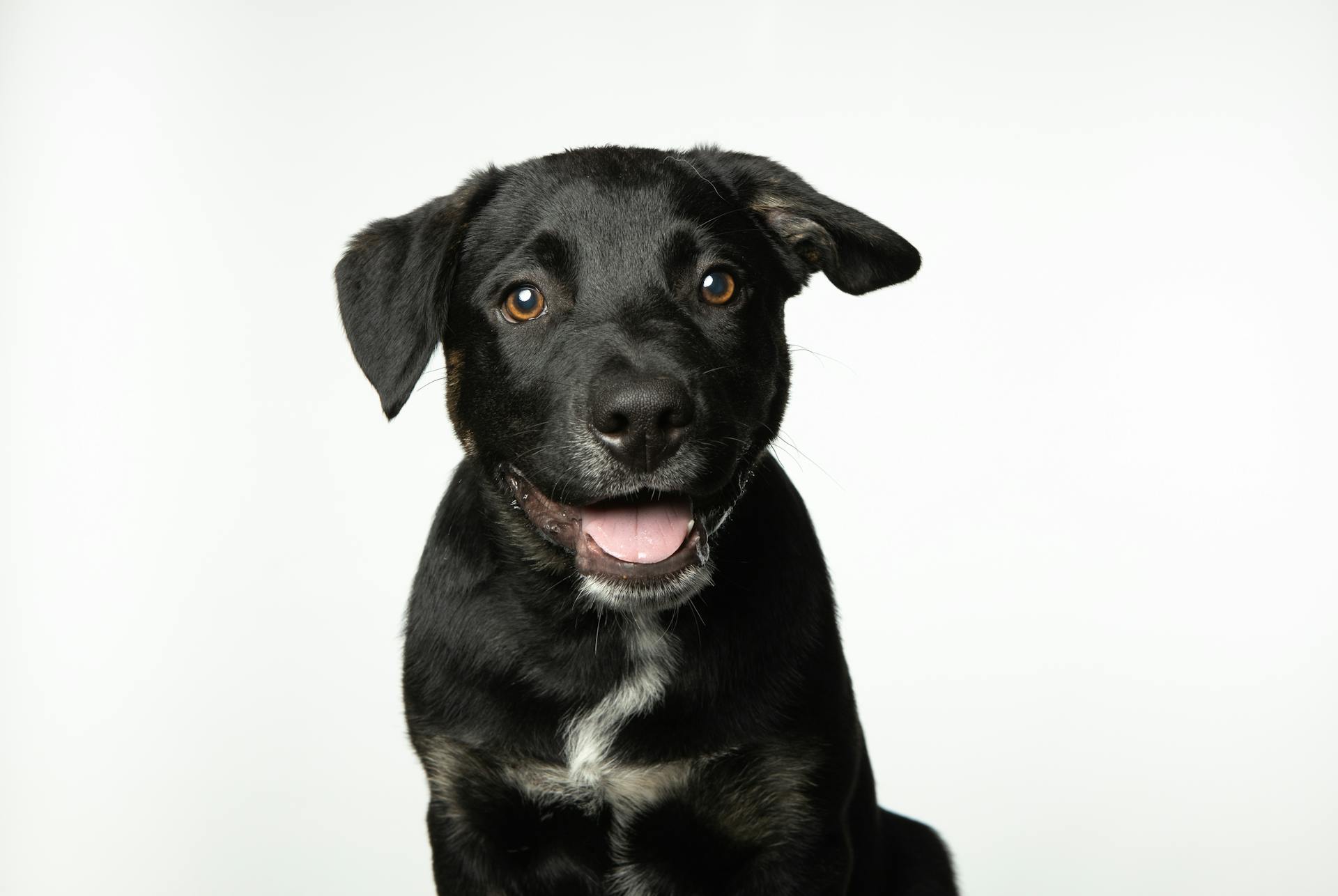
A Ratonero Valenciano can have puppies only once a year, as more frequent breeding is not healthy for the mother or the puppies. This is why it's essential to choose a responsible breeder who prioritizes the health and well-being of their dogs.
Here's a summary of the reproductive cycle:
This knowledge will help you better understand the needs of a Ratonero Valenciano and ensure that you're providing the best possible care for these wonderful dogs.
Recognition
The Ratonero Valenciano's recognition status is quite interesting. It's not recognized by the American Kennel Club (AKC).
The FCI, or Fédération Cynologique Internationale, also doesn't recognize the breed. This is reflected in their classification system.
Here's a summary of the recognition status of the Ratonero Valenciano:
Pros and Cons
The Ratonero Valenciano is a wonderful breed, but like any dog, it's not perfect. Here are some of the pros and cons to consider.
They have great intelligence, making them smart and trainable. This is a big plus for first-time owners or those who want a dog that can learn quickly.
Ratonero Valencianos are very healthy, with minimal health concerns. This means you can expect a long and happy life with your furry friend.
They are apartment-friendly, making them a great choice for city dwellers. Just be aware that they need regular exercise and mental stimulation to prevent boredom.
Ratonero Valencianos are good watchdogs, alerting you to any potential threats. But, they can be wary of strangers, so socialization is key.
They are kid-friendly, making them a great addition to families. Just remember to teach children how to interact with dogs gently and respectfully.
Ratonero Valencianos are also dog-friendly, but they can be strong-willed at times. Early socialization and training are essential to ensure they get along with other dogs.
Here's a quick rundown of the pros:
- Great intelligence
- Very healthy
- Apartment-friendly
- Good watchdogs
- Kid-friendly
- Dog-friendly
- Senior citizens friendly
- Good for first-time owners
However, there are some cons to consider. For example, Ratonero Valencianos can be prone to wandering off if they don't get enough attention or exercise. They also don't do well with allergy sufferers, as they can cause allergic reactions. And, they're not the best fit for office environments or households with cats.
Adaptabilidad y Independencia
The Ratonero Valenciano is a breed that adapts well to lifestyle changes, but it's not perfect. They can get along with new situations, but it's best to introduce them gradually.
Their adaptability to new environments is quite okay, usually. They can thrive in different living situations, as long as they receive attention and care.
If you're thinking of getting a Ratonero Valenciano, be aware that they need a family member at home during the day or a dog-friendly workplace, so you can take them with you. This way, they won't feel lonely or get anxious.
Some owners might find that their Ratonero Valenciano is more suitable for a household with a regular routine, but it's not a requirement.
Relaciones y Comportamiento
The ratonero valenciano is a social animal that thrives on interaction with its family, being very affectionate with its loved ones.
They can be a bit wary of strangers, which is why they're still valued for their protective instincts.
Their short coat requires minimal grooming, and they come in a wide range of colors, with tricolors being the most common.
As a responsible owner, it's essential to provide them with proper socialization and training, which they pick up easily.
Their lively and energetic nature makes them a great match for families with children, who can learn valuable lessons from their gentle and playful companions.
In fact, the ratonero valenciano is considered a great breed for families due to its gentle and patient nature with kids.
Sources
- https://www.expertoanimal.com/razas-de-perros/ratonero-valenciano-o-gos-rater-valencia.html
- https://www.20minutos.es/noticia/5113333/0/el-ratonero-valenciano-la-ultima-raza-autoctona-espanola-en-ser-reconocida-internacionalmente/
- https://dogell.com/dog-breed/ratonero-valenciano
- https://dogfydiet.com/blog/razas-de-perros/gos-rater-valencia
- https://www.veteasy.es/blog/ratonero-valenciano-caracteristicas-cuidados-y-problemas-de-salud
Featured Images: pexels.com
